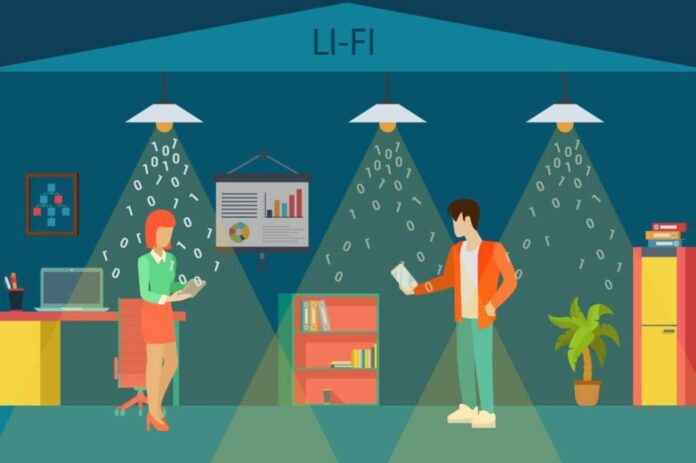Li-Fi Technology is the newest technology for wireless Internet access.
Li-Fi stands for Light Fidelity, and Li-Fi transmits data by using Visible Light Communication (VLC). Li-Fi also uses visible light from LED lamps to send information between machines or devices. Li Li-Fi speeds reach up to 10Gbps, while Li-Fi uses the same 60GHz spectrum as Wi-Fi. Li-Fi has many advantages over Wi-Fi(Wireless Fidelity).
Li-fi can transmit data at much more than 10 times the speed of standard Wifi. Li-fi sends light so it is invisible to humans, while Wifi sends electromagnetic waves that humans identify as sound and heat energy.
It doesn’t cause radiation poisoning like wifi does. Li-Fi also works in places where there are no cell towers or Internet connections available, which would be useful in uninhabited areas on Earth or even on Mars! Li-Fi will change the world someday, but for now, we must wait until technology advances a bit more before it becomes mainstream.
Brief History:
The Technology behind this concept was developed by Professor Harald Haas from the University Of Edinburgh who has already given a Li-Fi presentation at TED Global. Li-Fi is just one of the many tech concepts Audi showcased this week on its stand at Audi Connect. Li-Fi will be trialed for the first time in the Office building by October 2012 and Li-Fi tech may be widely available as early as 2014!
Li-Fi was invented by Harri Holsti, who published his research findings on Li-Fi in his paper “Wireless via Visible Light Communication – Li – Fe ” at a Nordic conference on Electro-optics 2007. In 2008, Li-Fi was patented by Harri Holsti, Antti P Miettinen, and Veli-Pekka Kelola, Li-Fi is currently undergoing practical demonstration trials.

The Li-Fi technology has applications in high-speed wireless data transfer within computer rooms, warehouses, factories, laboratories, or any place with walls that absorb light.
Li-Fi may be used both indoors and outdoors. Li-Fi provides several orders of magnitude higher speeds than current Wi-Fi networks without the need to replace existing infrastructures.
Li-Fi is perfectly safe to use and does not interfere with other electronic equipment or medical devices. Li-Fi will initially offer speeds comparable to current Wi-Fi systems, but it eventually will operate at multi-Gbit/s speeds. Li-Fi is also expected to have lower power consumption than Wi-Fi, resulting in longer battery life for devices using Li-Fi technology.
This post was originally published on 17, December 2021, but according to new information stuff, this post is updated frequently.
Editor Recommendations:
>What is 4K (Ultra HD)? Explained

